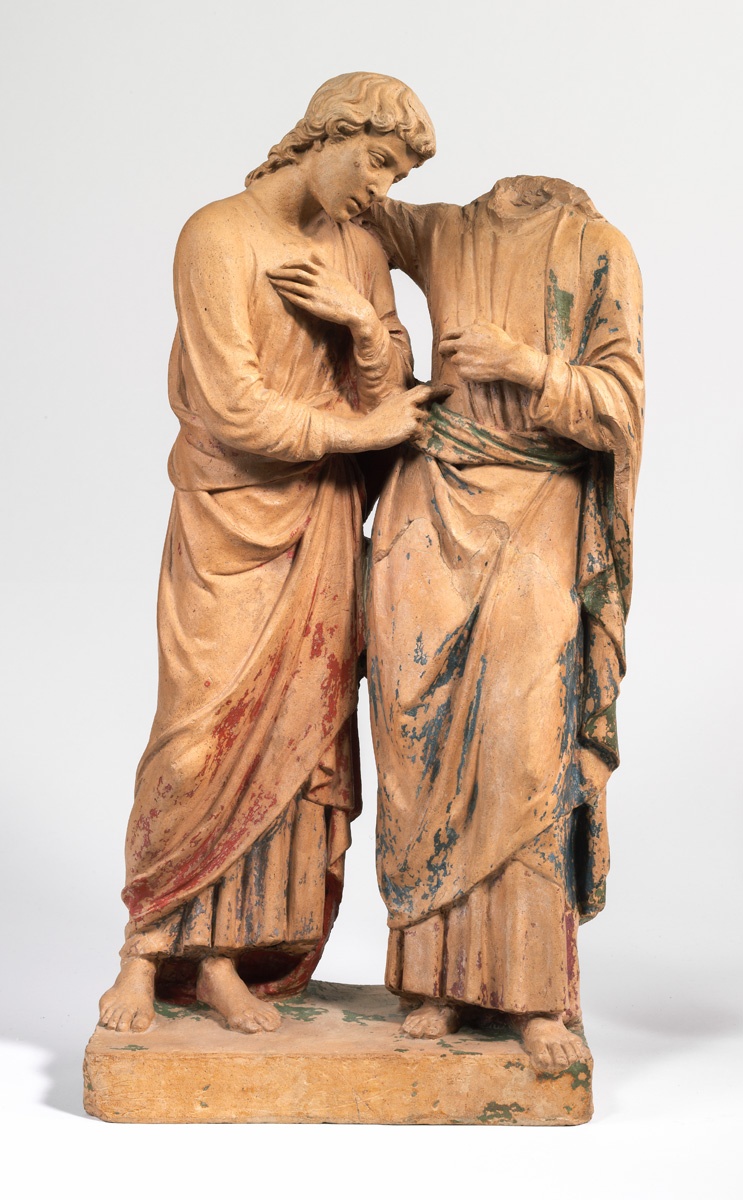The craftsmen, artists and doctors of Florence attempted to defend their interests by forming guilds. They located the guilds’ headquarters in the robust Gothic edifice originally intended as a market and wheat warehouse, the Orsanmichele, the facade of which was adorned with statues of each of the guilds’ patron saints.In 1463 the merchants’ tribunal (Tribunale della Mercanzia) took over the statue niche of the Guelphs, a political party that supported the guilds, and commissioned Luca della Robbia, one of the most sought-after sculptors of the early Renaissance, to design a large statue group depicting Christ and Doubting Saint Thomas. As was custom at the time, the master made a small terracotta (fired clay) model of the planned monumental bronze. The apostle Thomas, doubting the resurrection, placed his hand in Christ’s side (John 20:24-29), thus gaining proof that Christ had indeed died, but was risen again. (The judges may have interpreted this story as a metaphor of their vocation: to ’play the doubting Thomas’ until tangible evidence is found.) The scene is not dynamic; rather it is as if time stood still for the moment when Thomas accepts what for the human mind is incomprehensible.The model, however, failed to please the commissioners, because in the end the bronze was cast not of this composition, but of one by another leading sculptor in the city, Andrea del Verrocchio. That group, far more dramatic, dynamic and monumental than Luca’s, can be seen to this day in Florence.Manga Pattantyús
en

